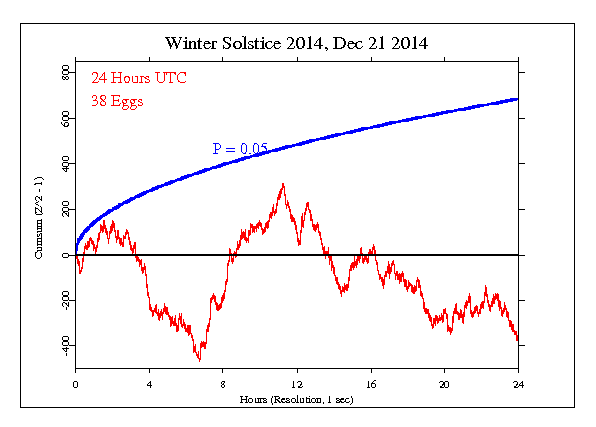Winter Solstice, 2014
Standard analysis
The Winter Solstice, like many of the natural points in time chosen for celebrations seems this year to be an occasion for more groups than usual who are looking for symbolic moments to use for intentional focus on a bright future. Many different themes, but mostly supportive of and dependent on group communication and commitment. Since the actual moment of the solstice differs by timezone, we use the full 24 hour day as the dataset. It should be noted that many groups actually set their celebrations for the 20th of December, not the 21st.
Specific hypothesis and results
The GCP hypothesis was set for the 24 hour UTC day of December 21 2014. The result is Chisquare 86046 on 86400 df for p = 0.802 and Z = -0.851.
Interpretation
The following graph is a visual display of the statistical result. It shows the second-by-second accumulation of small deviations of the data from what's expected. Our prediction is that deviations will tend to be positive, and if this is so, the jagged line will tend to go upward. If the endpoint is positive, this is evidence for the general hypothesis and adds to the bottome line. If the endpoint is outside the smooth curve showing 0.05 probability, the deviation is nominally significant. If the trend of the cumulative deviation is downward, this is evidence against the hypothesis, and is subtracted from the bottom line. For more detail on how to interpret the results, see The science and related pages, as well as the standard caveat below.

Standard caveat
It is important to keep in mind that we have only a tiny statistical effect, so that it is always hard to distinguish signal from noise. This means that every “success” might be largely driven by chance, and every “null” might include a real signal overwhelmed by noise. In the long run, a real effect can be identified only by patiently accumulating replications of similar analyses.
